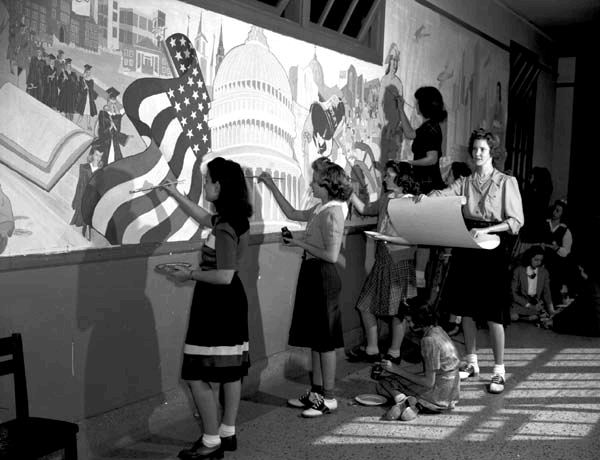|
Today in New Orleans History |
|
|
January 31


 Pontchartrain Park subdivision was
developed by private investors at the same time on land surrounding the public park. Billed at the time as "one of
the biggest, most luxurious Negro developments ever undertaken in the South," the 200-acre subdivision contains 1000
two and three-bedroom homes.(NOPL) Pictured
From left: Mayor deLesseps S. Morrison; Councilmembers Glenn Clasen, James Fitzmorris, Walter Duffourc, Victor H. Schiro,
A. Brown Moore and Fred Cassibry; unidentified; Joseph Bartholomew; unidentified; unidentified. The caption on reverse for the photo on the left: "New $25,000 clubhouse
is one of the facilities already constructed in the 190-acre Pontchartrain Park. There is also a nine-hole golf course,
picnic grounds and playground areas. Under continuous rapid development, more money has been made available for the development
of more recreational facilities. A $15 million, 210-acre private housing subdivision is now being developed around the
park. It will contain 1000 of the finest modern homes." Pictured on the right: Morris F.X.
Jeff, Sr., New Orleans Recreation Department Pontchartrain Park flooded badly
in the aftermath of Hurricane Katrina in 2005, taking on water first from the overtopping of a section of floodwall of
the Industrial Canal caused by storm surge channeled into the city from the MRGO Canal, then from major breaches sustained
by floodwalls along the London Avenue Canal. Photographs by Leon Trice Photography  

To receive an update for each day in New Orleans
history, join our facebook page
- Today in New Orleans History
Mug shot and arrest information (on an NOPD Bertillon card) for Hugh M. Howell who was incarcerated for "Dangerous and Suspicious" activity on January 31, 1913.
Eleanor McMain School for Girls Opens to the Public We've all passed the
faded pastel pink and blue art deco building at 5712 South Claiborne Avenue and many of us have wondered why it is painted
as it is. But when it first opened it was much more colorful. As the girls stepped inside onto
inlaid terrazo floors, two cream-colored curved staircases with carved balustrades and mahogany rails could take them up the
the principals office, the main office, or the teachers room. The principals office opened to a brightly tiled, yellow-walled
court yard with a blue, green, and yellow fountain, providing a "tropical atmosphere". On
the third floor was a study hall which could accommodate 300 students. It was finished in green and buff with full-length
leaded glass doorways which led to an overhanging balcony. The classrooms were finished in green, blue,
and pink in a "modern style in perfect keeping with the personalities of the lithe creatures who will people it".
Each room had a telephone. Some large rooms could be divided by accordion doors which, when closed, provided a series of blackboards.
The building was equipped with radio and loudspeakers. Oscillating heaters were employed on the ground
floor; ventilation and heat throughout the facility were "modern to the nth degree" and there were "many and
generous windows". Natural lighting in the art room was provided by a central skylight.
There were hand dryers on each side of white wash basins. "Ducky little kitchens", each different, were designed
so that "one can learn to cook for a $15 a week clerk husband, a husband of moderate means, or a wealthy banker spouse".
The first was small with a tiny stove and diminutive sink -- "Girls will learn to manage a small apartment, so
that if they plan to live on love they will know how to feed hubby dear in cramped quarters, and on a slim income".
The second kitchen was larger, "to train for moderate housekeeping". The third had an "electric stove
and other luxuries that migh be found in a wealthy home". The auditorium"resembles a large
theater" with a saucer-shaped balcony, special switchboard for stage lighting, a projection booth "for showing both
silent and talking pictures", and an asbestos curtain side-draped with gold and blue velvet. It could accommodate 3000
people. According to the school board architect Edward C. Meric, who worked with chief architect
E.A. Christy, the "Vivid coloring is built after the fashion of such school buildings in the East and Middle West".
Schoenburger noted the "gay colors and scientific educational aids" at McMain. There were, in fact, four science
labs, 40 classrooms, a 5000 book library, and a modern cafeteria in the building which measured 180 x 390 feet and was built
at a cost of $550,000. This "colorful structure embodying many new ideas in education was opened under the direction
of Miss Alice A Leckert, principal. E.A. Christy submitted building plans for school on August 13, 1930. McMain was scheduled to open
on the same day that the new boys school, Alcee Fortier was to open, in February 1931.. The building permit for McMain was
approved by city engineers on October 29, 1930. J. A. Petty was the builder of the school located on South Claiborne between
Joseph and Nashville streets. Construction work started in November. On December 10, 1930, Miss Leckert, principal of
McDonough No. 14, was named as McMain's first principal. Fortier opened as planned on February 2, 1931
but McMain did not. As Fortier welcomed as many as 1500 boys, McMain's first floor had yet to be completed. According
to Christy, difficulties were encountered in the foundation and excavation because "the site was once a swamp".
The builder expected to sink 45 foot pilings but instead was forced to use 70 foot piles. To further the delay, many
tree stumps had to be removed from the boggy location. Girls who were scheduled to attend McMain, whose student boundaries
were South Carrollton, St. Charles Avenue, Howard Avenue, and Loyola University, enrolled instead at Sophie B. Wright.
The opening of McMain was rescheduled for the fall of 1931. Plaster-work for McMain was executed by
Sam C. Ball and Company, whose work could also be seen in five public markets and the old U.S. Mint. In July, $13, 730.36
was approved for purchasing furniture and equipment. On September 6, 1931 registration was open for McMain students
but their school was still not ready. Nicholas Bauer, Orleans Parish Superintendent of Education announced that it would
open on September 31. But on September 12, officials announced that the school would not be opened until February of
1932. In January,, Fortier boys held their graduation exercises in McMain's auditorium but liens
against the McMain contractor threatened to delay the girls school's February opening. After legal wrangling, McMain finally
opened its doors to the public on Sunday, January 31, 1932 from 4 to 7 p.m. when a reception was hosted by the teachers.
The 917 students' first day was Monday, February 1, when the girls gathered in the auditorium for speeches by local dignitaries
followed by a flag raising ceremony with music provided by the Warren Easton band. This New Orleans
Public Library photo shows McMain students on November 17, 1941 painting a mural in the corridor of their school. They are
Christeen Young, Gayle Hughes, Mary McGowan, Lois Townley (on ladder), Sybil Jung (seated), and Jane Menz. Today Eleanor McMain Secondary School is open to boys and girls in the 7th through 12th grades. Still
under the direction of the Orleans Public Schools, it has 769 students whose graduation rate is 95%. |
|
|

To receive an update for each day in New Orleans history,
join our facebook page - Today in New
Orleans History.
Analytics |
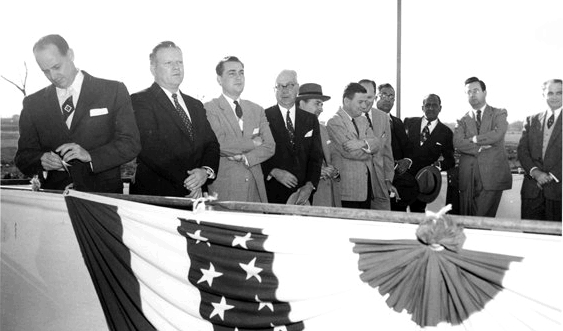 Pontchartrain Park was developed in the mid-1950s by the Park and Parkways Commission (now the Department of Parks and Parkways)
on the lakefront land adjacent to the Industrial Canal. The 190-acre park, initially constructed for use by African Americans,
provided a 9-hole golf course (expanded in 1957 to 18 holes), a picnic area, playground and lagoons. Several years later
a baseball stadium and tennis courts were added. In 1979, the golf course was was renovated and renamed in honor of Joseph
M. Bartholomew, Sr., the course's designer and first golf pro. The playground, stadium and tennis courts are now administered
by the New Orleans Recreation Department.
Pontchartrain Park was developed in the mid-1950s by the Park and Parkways Commission (now the Department of Parks and Parkways)
on the lakefront land adjacent to the Industrial Canal. The 190-acre park, initially constructed for use by African Americans,
provided a 9-hole golf course (expanded in 1957 to 18 holes), a picnic area, playground and lagoons. Several years later
a baseball stadium and tennis courts were added. In 1979, the golf course was was renovated and renamed in honor of Joseph
M. Bartholomew, Sr., the course's designer and first golf pro. The playground, stadium and tennis courts are now administered
by the New Orleans Recreation Department. 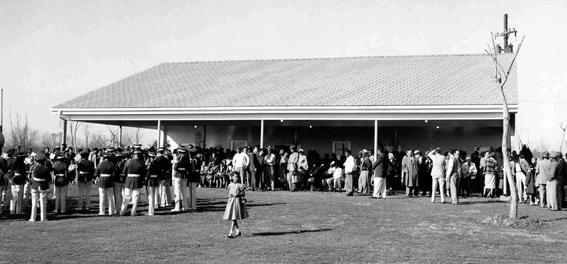
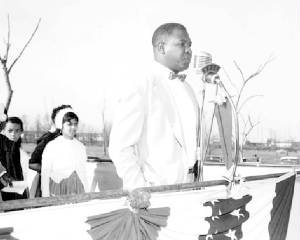
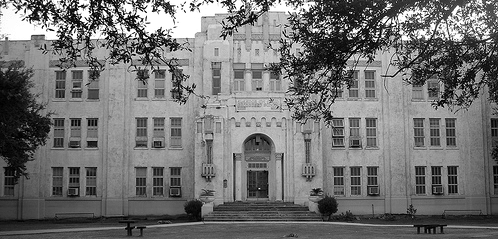 Eleanor McMain High for Girls first welcomed ----- on February 1, 1932. It was the only New Orleans public school named
for a living person, but an exception had been made to honor Miss McMain who had done so much for so many through her work
at Kingsley House in the Irish Channel. Under McMain's guidance and leadership, Kingsley House had grown from a modest
parish outreach program at 929 Tchoupitoulas of the Trinity Episcopal Church parish to an internationally known settlement
house. Elanor McMain must have been bowled over by what Times-Picayun writer Podine Schoenburger described as the "new
high school which combines luxury with efficiency" in a symphony of riotous, splashing color".
Eleanor McMain High for Girls first welcomed ----- on February 1, 1932. It was the only New Orleans public school named
for a living person, but an exception had been made to honor Miss McMain who had done so much for so many through her work
at Kingsley House in the Irish Channel. Under McMain's guidance and leadership, Kingsley House had grown from a modest
parish outreach program at 929 Tchoupitoulas of the Trinity Episcopal Church parish to an internationally known settlement
house. Elanor McMain must have been bowled over by what Times-Picayun writer Podine Schoenburger described as the "new
high school which combines luxury with efficiency" in a symphony of riotous, splashing color".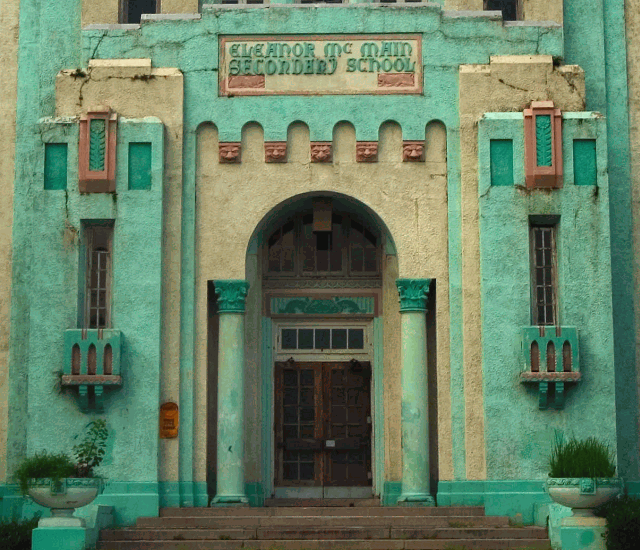 The photos here are new. The following descriptions are from Podine Schoenburger's January 10, 1932 article. The colors
described by Shoenburg don't match the modern-day colors but give us aglimpse or what the building looked like so many
years ago: The exterior of the stucco school building was painted green. Schoenburger described the "strange colorful
entrance" with vivid blue urns, one at each side of the main door, in which century plants were growing. The carved tops
of the white pillars flanking the doorway were painted green and cold. The doors were of leaded glass with a basket
of brightly colored flowers topping them. Green grinning gargoyles topped them all, and above them the nameplate was blue
with with gold letters spelling out the school's name amid a pair of gold lions.
The photos here are new. The following descriptions are from Podine Schoenburger's January 10, 1932 article. The colors
described by Shoenburg don't match the modern-day colors but give us aglimpse or what the building looked like so many
years ago: The exterior of the stucco school building was painted green. Schoenburger described the "strange colorful
entrance" with vivid blue urns, one at each side of the main door, in which century plants were growing. The carved tops
of the white pillars flanking the doorway were painted green and cold. The doors were of leaded glass with a basket
of brightly colored flowers topping them. Green grinning gargoyles topped them all, and above them the nameplate was blue
with with gold letters spelling out the school's name amid a pair of gold lions. 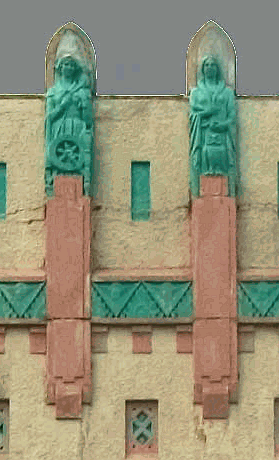 High above the entrance of the three-story building are two sculptures by Albert Ricker. The first depicted a
young Acadian maiden in a blue dress, starched apron, and a spinning wheel at here feet to symbolize industry. The second
figure is of an older woman, with an owl as symbol of wisdom.
High above the entrance of the three-story building are two sculptures by Albert Ricker. The first depicted a
young Acadian maiden in a blue dress, starched apron, and a spinning wheel at here feet to symbolize industry. The second
figure is of an older woman, with an owl as symbol of wisdom. 